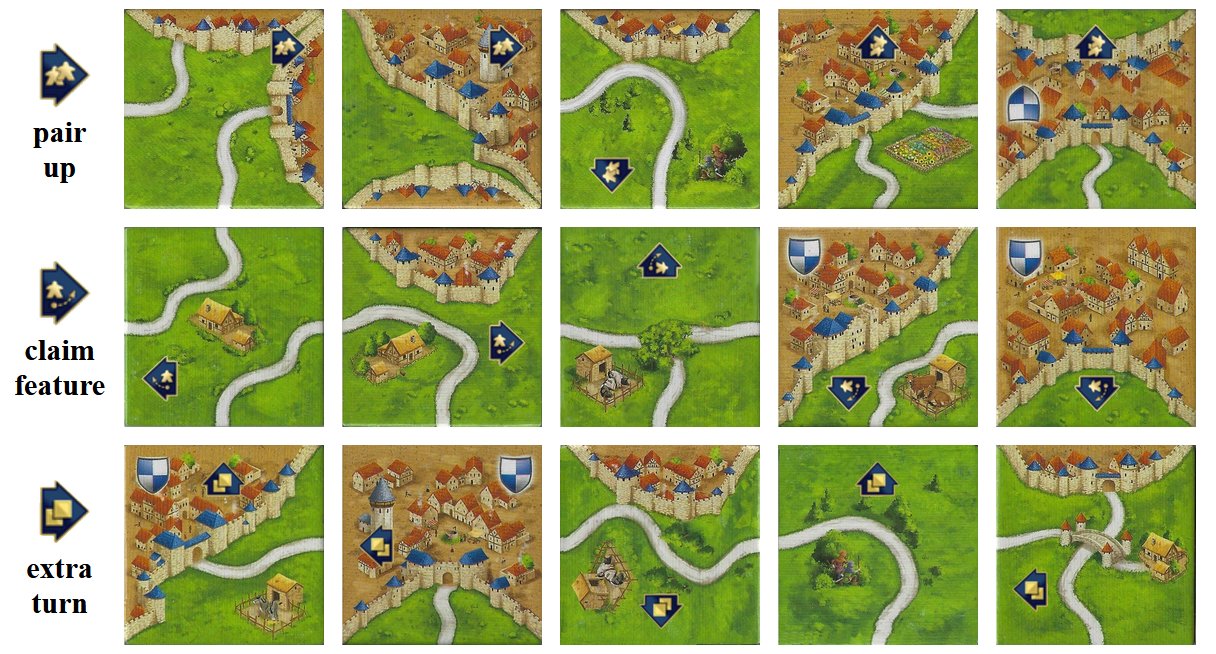20th Anniversary Expansion

Shuffle the 15 new tiles with the rest of the land tiles.
You may place a meeple on the tile just placed according to the normal
rules. However, if you activated an arrow symbol, you may have an
additional option depending on the symbol type:
 |
Instead of placing a meeple on the tile just placed, you may
add it next to another of your meeples anywhere on the game
board, so now there will be two meeples side by side. This
means that you have one more meeple on the feature for its scoring
and you may be able to secure the points (single-handedly).
Note: You may not use this action to add a third meeple to
the two already placed side by side. |
| |
 |
Instead of placing your meeple on the tile just placed, you
can place it on any unoccupied, incomplete feature (a road,
a city, a field, a monastery, or even an abbot on a monastery or
garden) anywhere in the playing area - so it doesn't have to be on
the tile just placed. Please note that fields completely surrounded
are not considered completed, since they are not scored until the
end of the game.
|
If you complete a feature with 20th Anniversary Expansion tiles,
it is scored according to the normal rules.
Final scoring
At the end of the game, a feature with 220th Anniversary Expansion
tiles is scored according to the normal rules.
 |
If you activated this symbol, you get an extra turn. First, you complete your current turn (the one in which the symbol was activated) according to the usual rules, and then you perform another full turn. Caution: If you activate this symbol again, it will have no effect. You will not get a third consecutive turn without interruption. You can activate both other symbols in an additional turn. |
Extra turn and the builder: During a double turn, if you activate an
extra turn
arrow symbol and you get an extra turn, you will finish your double turn in full before executing your extra turn.
Basically, you can take only one builder second turn and only one 20th Century extra turn. But, you can take them both which will create a triple turn!
|